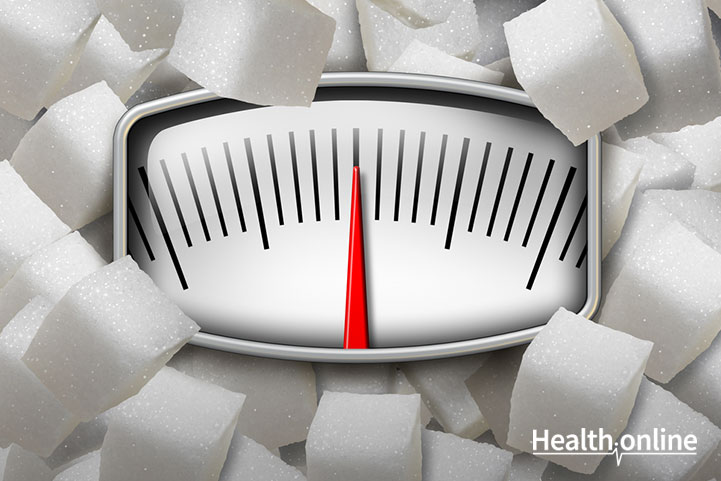
Journey of Sugar in the Body
Sugar is an essential nutrient that the body needs to survive and thrive. The brain requires sugar in order to function properly, the muscles require sugar for immediate bursts of energy, and let’s face it- sugar tastes great! However, while a little sugar is good for the body and health, there are some things about how sugar can affect the body that everyone ought to understand.
Listed below are nine facts of what sugar does once it reaches the inside of your body, along with some things to understand about how to maintain your sugar levels:
1) From mouth to storage: When you eat something that contains sugar, it obviously travels to your stomach for processing. After reaching the stomach, it then travels to the small intestine, where it is further processed and utilized. The sugar is then sent throughout your body via your blood for storage. This form of storage is called Glycogen. Glycogen is important for all humans because it allows quick bursts of energy at times of greatest need. When you exercise, your glycogen stores are typically used before other forms of energy are used, so make sure that your glycogen stores are at a healthy balance.
2) In the blood: Sometimes, Glycogen storages contain too much sugar already, and therefore the sugar then remains in the blood. When sugar content is chronically high in your blood, it can lead to diabetes , peripheral neuropathy, and potentially, loss of a limb. Monitor the amount of sugar you consume daily, especially if you are at risk of diabetes or have a family history of this disease. It is recommended to maintain a blood sugar content of about 90-100 milligrams per deciliter of blood for optimal health. Anything above 100 milligrams per deciliter typically means you are at risk and may have high blood sugar.
3) Added calories: Anything you consume has calories and the calories you eat are a marker of energy you place into your body. Sugar contains four calories per gram of sugar consumed, which can add up in a hurry. The typical diet usually allows for around 150-200 grams of sugar daily (in the form of carbohydrates), which is about 600-800 calories daily. Consider having your diet consist of about 40-55 percent of carbohydrates for optimal health. Anything higher or lower can drastically affect your body size and energy levels.
4) Sugar to fat: If you are watching your figure, you may know that you need to avoid fattening foods. However, if you over-consume carbohydrates and sugars, they will eventually be stored as fat. Over-consuming on any nutrient is not recommended for anyone looking to lose weight , and added sugars tend to be an empty source of energy that contain zero vitamins and minerals.
5) Indigestible: Some sugars that you eat simply cannot be digested in the same way as typical sugar. These are called fiber and they are a form of carbohydrate that is essential to your colon and heart health. In addition, fiber can help anyone who is on a weight loss program to feel full much quicker, which results in the avoidance of overeating. Consider getting about 25-30 grams of fiber daily for best results.
6) Fructose: There are some foods that contain added sugars (this means that companies add sugar to the product) and then there are foods that naturally contain sugar. Fruits and vegetables are the best forms of foods that contain natural sugar. They contain fructose, which is a sugar that is quickly broken down in the body and provides instant energy. It is recommended to eat at least five servings of fruits and vegetables daily for optimal health.
7) Avoid high sugar foods: Not all foods are created equally- some have higher sugar content than others. It is important to read food labels for this reason. Some of the most notorious culprits for high sugar content include sugary soda, candy, ice cream, sorbet, bananas, and any food that has sugar added for flavoring. Food labels are required to show how much sugar is in each serving of food , so do read the ingredient list carefully.
8) Exercise to get rid of sugar: We all know that exercise is important for looking good and for overall health, but exercise is critical for maintaining sugar levels in the body. Resistance exercise is one of the most important things you can do for your sugar balance. With every muscle contraction (or repetition) you perform at the gym, you gain receptor cells called GLUT-4 that are essential for sugar balance in the blood. Also, cardiovascular exercise can quickly diminish sugar in the body, which can quickly decrease any stores you may have circulating in your blood.
9) Insulin: When you eat a food that contains sugar, your body responds by secreting a certain hormone to help move sugar from your blood into the working cells of your body. Insulin is a hormone that is secreted into your blood and the pancreas is responsible for this. A significant number of older adults (and younger adults nowadays) have type II diabetes because the insulin in their body is not effectively working. Over a period of time (in years), the body may require medical management of the sugar it contains.




